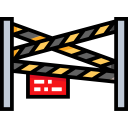Permits, Notifications, and Competent Persons
Before installing fuel‑burning equipment, chimneys, or treatment systems, confirm notification and written permission requirements. Provide technical drawings and specifications early, and don’t energize equipment until approvals are in place. Post your planned installation timeline, and we will outline a realistic sequence that avoids costly stop‑work instructions.
Permits, Notifications, and Competent Persons
Certain systems, such as industrial effluent treatment or scheduled waste management, should be overseen by competent personnel recognized by the authorities. Investing in training reduces errors and downtime. If you are unsure which competencies fit your operations, comment with your processes and team size, and we will suggest options.
Permits, Notifications, and Competent Persons
Maintain permits, monitoring reports, calibration certificates, maintenance logs, manifests, training records, and incident reports in both digital and hardcopy forms. Keep them organized by topic and date for quick retrieval. Aim for retention of at least three years. Want a file index you can adopt tomorrow? Subscribe for our ready‑to‑use structure.



